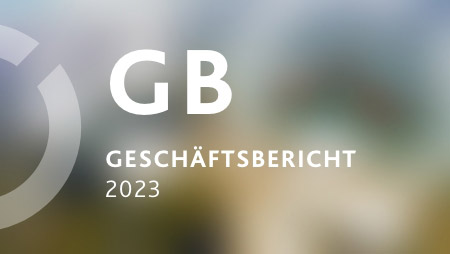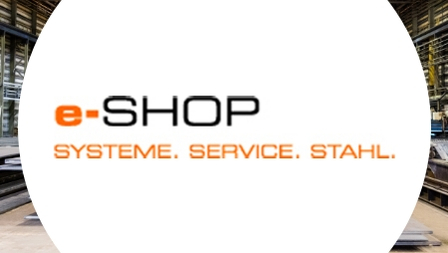SITP
We would like to present the Salzgitter International Training Program by means of three Newsletters written by the participants of a course which started July 2014.
Dear All,
As a large international company, Salzgitter has employees located all over the world. During the week of July 7 – 11, nine of these employees from seven different countries came together to participate in the 2014-15 Salzgitter International Training Program (SITP).
The goal of this program is to foster leadership development and networking between employees with international contact and tasks. Our first module was led by our CONTUR trainers Stefanie Wurm and Michael Hardtmann and was accompanied by the Salzgitter HR Program Head, Frank Gießelmann.

We came with different perspectives and expectations for what the SITP had in store for us and quickly learned that we had more in common than we realized. Exercises designed to get to know each other helped us overcome any nervousness and prepared us for the week ahead. After sharing experiences and discovering the key characteristics of effective learning processes, we began to explore the idea of how effective teams are developed and maintained. By the end of the first day, we eight individuals were already starting to form a team of our own.
A special simulation called “Magic Stick” kicked off our second day together. Although the task sounded very easy, as a team we needed almost 15 minutes just to put the stick on the ground. Thanks to our team spirit and good cooperation, we reached the goal! In order to be successful as a team, each member must adopt a specific role or roles. We learned more about this with the “Belbin Team Roles”. After answering business related questions on our behaviour, we received an impression of our preferred team role. Another highlight was the simulation “5 Tricks”. We were separated into three groups with – as we assumed – the same rules. After playing the first round of the simulation, the winner had to change the tables and then the problems began… We learned here that small cultural differences can cause big problems.

Due to the success of the German football team at the World Cup Semi-Final, we started very enthusiastically into the third day. Our first motto was “the impossible is possible”. A discussion about cultural similarities and differences led us to talk about the stereotypes of our own nations, where we realized that none of us came in with a sombrero on or a baguette under the arm. Another important topic we tackled was setting SMART targets, which we realized can be difficult, but is very effective for work-life.
The final day of Module 1 was dedicated to self-management and feedback. For example, we practiced the use of various tools to set priorities. One of these, the Eisenhower matrix, can help to make a decision regarding which task to complete before another. The key moment of the day was a practical exercise in which a part of our group had the opportunity to apply some the week’s learnings and others could practice observing and giving feedback in a development center task. Giving mutual feedback helped us to see that implementing this regularly in the workplace is a valuable tool for our growth as employees and as people. After exchanging contacts, we spent a free evening together and are eager to see each other again in November.
Salzgitter International Training Program - Newsletter Module 2

Dear All,
Four months after coming together for the first time in Hanover, the 2014/2015 SITP team reunited in November for Module II. We kicked off on day 1 with a focus on business presentations. These are something that almost every person in the business world will have to face at some point, and we were presented a number of different scenarios to work on our presentation skills and overcome any nervous feelings. There was a special focus on presentation etiquette and strategies for different cultures, as well as stressing the important non-verbal parts of presenting and how to present effectively
The presentation exercises also gave everybody a chance to work on other key aspects from the first module, such as time management, organizational skills, and giving and receiving constructive feedback. While the audience and their needs were recognized as the key focal point of any business presentation, the team was reminded that it is also important to remember to be yourself.
Day 2 was a big change of pace as the topic of the day was finances. Finances?! For some of us, this meant going over topics that we had not covered since our school days, and we anticipated a hard day full of facts and figures. This was not the case, however, as the financial figures were incorporated into a business simulation that allowed everybody to physically see where the money was going in different situations. The simulation helped us to understand how different business decisions have an effect on the balance sheet and the cash flow of a company, and after a few times we could calculate key performance indicators like ROE, equity ratio, ROCE, and EVA quite easily.
The evening included a productive “fireside chat” with guest speaker Dr. Stelter from KHS Bad Kreuznach. He presented some of KHS’s latest technological innovations and explained how KHS is looking to expand its offerings in this latest technological age. After the presentation, the second day came to a close with a pleasant team get-together and a great exchange of intercultural experiences.

After surfing the waves of Finance for a day, the third day was another change as we focused on the topic of Communication. The day began with a group exercise to demonstrate the cycle of communication. After spending some time discussing the parts that make up communication, we moved into activities to apply the concepts. A problem-solving session using the “Collegial Consulting” technique inspired us to think methodically and ask questions, which led into other activities like problem analysis, brain storming, role playing, and active listening. Communication challenges such as communicating across cultures or upwardly within a company provided some of the biggest takeaways of the day, as did a talk about influence.
A storytelling activity served as the bridge from day 3 to the final day. Each team member got to tell a personal story from their lives, with the goal being to tell a story that was quick, memorable, and meaningful to the audience.
With that, the team shifted its focus to the last major topic of the week, Conflict. It is another topic that can make people uncomfortable, but also something that everybody will have to experience at some point in their business careers. By digging into what drives conflict and the different types that exist, we were able to practice how to handle difficult situations with colleagues and ways to de-escalate conflicts or prevent them from even happening.
The week concluded with another round of peer feedback and some early explanation of Module III so the group could start to prepare. Once again, it was a productive and eye-opening experience for everyone, and we are looking forward to returning for the final week and putting everything we have learned to use in February.
Salzgitter International Training Program - Newsletter Module 3

Dear All,
After two weeks of training on a wide variety of topics and another few months to practice what we had learned, the SITP team reunited for our final week of training in Wesel from February 17 to 20, 2015. That week brought with it the biggest and most important part of the program - the Development Center. We each had the chance to demonstrate what we learned during the first two weeks of the program to a panel of observers, and despite the assurances of the trainers that they had nothing to worry about, there is always a certain amount of nervousness that comes with a task like this.
Module III opened with a day focused on Project Management. This was a topic that we had varying levels of experience with, some very little to none and some a significant amount. The key topics covered during the day included general roles and responsibilities of project managers, development of project plans, the importance of well-defined work packages and setting milestones, and the key dynamics in selecting a suitable project team.
We split up into mock project groups to practise some of these steps, and then came back together to explore the needs and requirements that project managers and team members have of each other.
With the conceptual part of the program completed, Day 2 of the third module signalled the beginning of the Development Center. Faced with a busy schedule of challenging assignments and teams of observers spread across multiple presentation rooms, we SITP team members took turns putting the lessons we have learned to the test in a number of different business simulations. The emphasis was on key program topics like effective communication and presentation styles, working in teams, conflict resolution, as well as giving and receiving feedback. Between assignments, good time and self-management skills were important to make sure we were fully prepared for our next task. It was indeed a challenging day for everybody, participants and observers, but also a successful one!

Day 3 was the official end of the Development Center, with each of us making one final presentation. This one was related to our current jobs and companies, so the change to a familiar topic made things less stressful. Once that was completed, the team headed off to another plant tour of the plate rolling facility in Mülheim while the observers gathered to review and organise their feedback for each participant.
That feedback was delivered to each participant in the afternoon, giving us a detailed understanding of our greatest current strengths and areas of potential improvement. A relaxed and enjoyable group dinner that night all but signalled the end of the module.
Of course, no good training program can officially end without a wrap-up session, so the team came back together with Stefanie Wurm (our Trainer from CONTUR) and Frank Gießelmann (SITP Program Head of Salzgitter Group) on the final day to review lessons learned over the final training week specifically as well as over the entire SITP program as a whole. With the goal in mind of growing and improving the program across the Salzgitter network, we offered some suggestions and received some as well to take back home with us. The 2014/15 SITP was an eye-opening and rewarding experience for all the participants, and hopefully it can continue to help drive the future of Salzgitter’s success.

Your SITP Team 2014/15
Ruben Camacho, KHS Mexico S.A. de C.V., Mexico
Marco Giannini, Salzgitter Mannesmann Stainless Tubes Italia Srl, Italy
Jacqueline Gilles, Salzgitter Mannesmann International GmbH, Germany
Laszlo Kardos, Salzgitter Mannesmann Acélkereskedelmi Kft., Hungary
Pascal Martinetti, Salzgitter Mannesmann Stainless Tubes GmbH, France
Christina Molderings, KHS GmbH, Germany
Parameshwaran Nair, KHS Machinery Pvt. Ltd., India
Bradley Vietrogoski, KHS USA Inc., USA
Vanessa Windgassen, Salzgitter Mannesmann Precision GmbH, Germany
P.S. By the way, this great example of group-wide cooperation fits the values of our Salzgitter Mission Statement perfectly.















